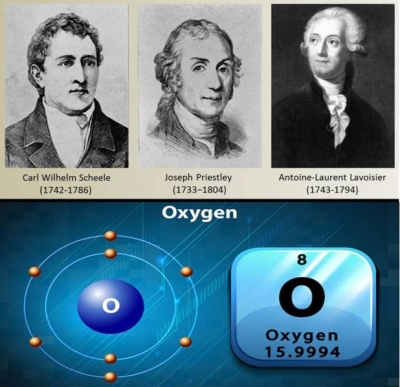
Over 500 years ago, Leonardo da Vinci suggested that the air we breathe contains something vital to life. He discovered this when he observed that the combustion of air caused animals to suffocate, which meant something was removed from the air in that process. Though many medieval alchemists tried to find what it was, they failed. Then in 1774, Joseph Priestley, an English chemist, separated out the substance and showed that it was a single chemical element, and not some special mix of gases. Priestley also published his findings, becoming the first scientist to do so and thus allowed others to confirm his discovery. This process of documenting is still considered important in claiming priority about discovery disputes.
The French chemist Antoine Lavoisier, who named it oxygen (meaning ‘acid maker’), later claimed that he discovered the gas independently of Priestley. However, it is known that Priestley had already shown Lavoisier how to make oxygen, undermining his claim.
Some historians also argue that the credit for discovering oxygen should go to Carl Scheele, a Swedish chemist, who discovered it several years before Priestley. The sad part is that Scheele’s letter to Lavoisier describing his work never arrived, and his scientific report sat in the printer’s office for two years, all of which led his work to be overshadowed by Priestley’s and Lavoisier’s works.
Oxygen supports life. It is an element with the atomic symbol O and atomic number 8. Pure oxygen is nonflammable and is a colourless, odourless and tasteless gas.
Picture Credit : Google




